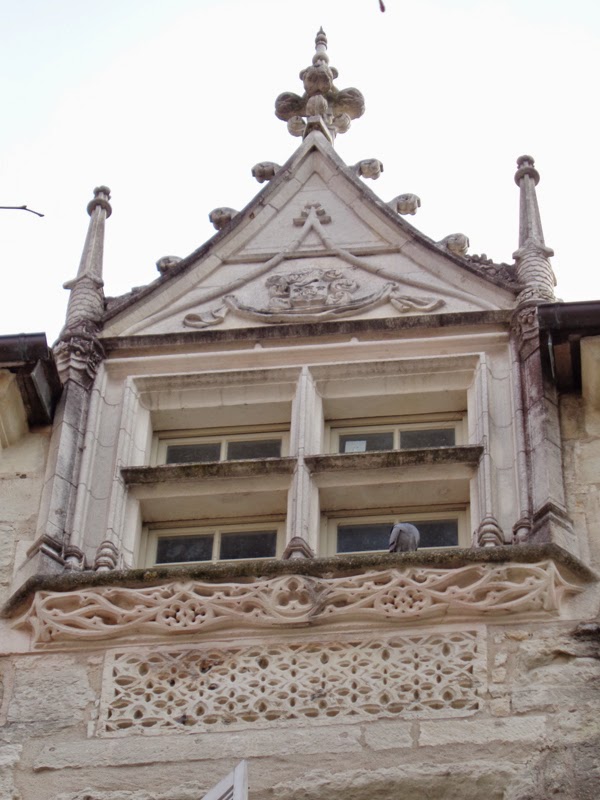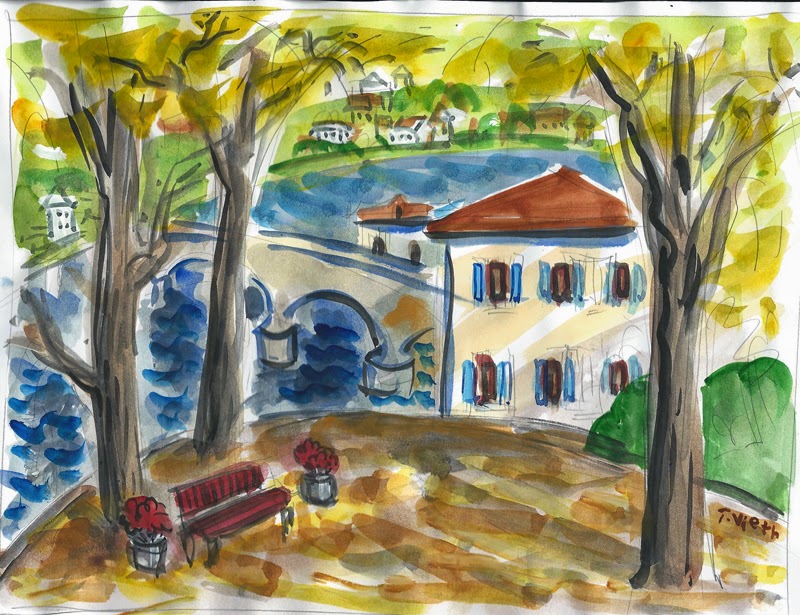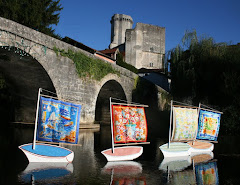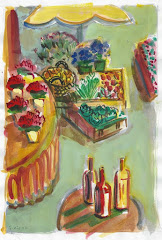Visiting our closest city, Perigueux (“pair e geu”) is a journey back in time. A small city of about 60,000 tucked along a couple of bends in the gentle Lisle River, nestled under the shelter of surrounding hills, this community has been inhabited by humans for a very longtime. It takes a bit of patience but one can trace the flow of history through it’s glorious treasures; artistic and architectural artifacts

Through good times and bad Perigueux has evolved. An ancient form of gentrification commenced in the 12th century when the 1st century Roman neighborhoods were taken apart and transformed into a fancy walled city for wealthy nobles. Artisans and worker bees lived, unprotected, across the fields and up the hill. By the 14th and 15th centuries there is relative peace and security in the region. The merchant class is starting to prosper and they are constructing elegant homes on the hill. Men’s need to go to war is fulfilled with Crusades to Italy and the Middle East. Money is being made and money is being spent. Those that are prospering the most want to flaunt their wealth and good taste. At that time good taste meant a flavor of Italy. Architecture incorporated the romantic, and lighter than air designs and construction ideas introduced in the Italian Renaissance.



Perigueux flourished during this time of wealth and continual transformation. Medieval buildings were given face lifts to give them a lighter, more up to date flair. Wooden structures were torn down and replaced with crisp white buildings of locally quarried stone. Large homes were built for comfort. And, of course, to boast of the affluence of the family living within.
For the time being there was no need for heavy defensive windows and doors. Architecture could be art. Although they didn’t quite beat their swords into plowshares, the artisans of weapons could now turn their craft to more gentile pursuits. All this would change with the horrendous Wars of Religion, with neighbors fighting neighbors throughout France.
Wandering through Perigueux one is immersed in her glorious story. Look up as you walk and see the spired rooflines, gargoyles and slate roofs (a sign of wealth normally found only in the Loire Valley). Look between the first and second floors of buildings and see the decorative columns, arched windows, and decorative scroll work under the eaves. At ground level check out the doorways. A family coat of arms above the door, a small cross proving their faith, finely wrought iron work, or symbols showing their fidelity to their favorite king. For Francis the 1st it was a salamander.
These homes were often also the shop of the merchant. The arched alcoves were the entrance to the shop or work space. Perigueux was known for its linens, bakeries, leather goods and so on. It sounds crazy, but there were meat-pie pastries that were supposedly transported all the way to Paris during this time.
Perigueux is a living city. The modern world has seeped in with each passing century. Pizza is now the most obvious sign of Roman/Italian influence. Sometimes entire blocks have been torn down and recreated. But luckily the beauty of the past has been treasured enough to leave us with narrow streets to wander and a diversity of architecture that leaves us breathless at the artistry of past times.





















































